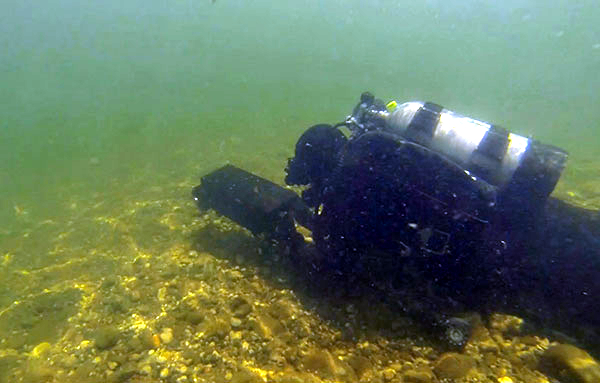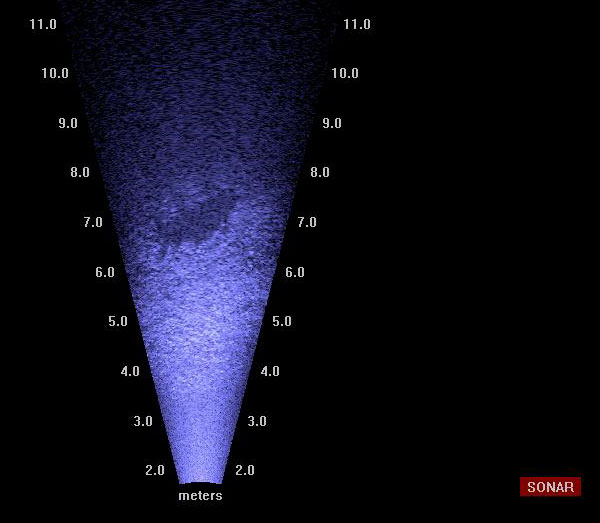Benefits of Using Hydro-acoustic Techniques
Over the last decade, active hydro-acoustic techniques have proven to be an effective method of unobtrusively evaluating anadromous fish populations in freshwater and marine environments.
Hydro-acoustic imaging techniques:
- have a very high sampling power, minimal sampling impacts
- determine fish travel direction
- detect fish in highly turbidity waters
- accurately count fish
- detect fish over long range
- provide a record in the form of a video-like ultrasound file
- can be hand-held, boat-mounted, or permanently mounted to shore
- species can be determined, in some cases, while not affecting fish health, behavior, or the environment being monitored
- have been successfully applied to a variety of fisheries evaluations.
Fixed and Mobile Hydro-acoustic Techniques
Fixed hydro-acoustic stations are situated at stream "pinch points" and fish ladders to assess migratory fish populations. Boat-based mobile hydro-acoustic imaging surveys collect data by traversing predetermined transects in a body of water, and sampling fish and bottom characteristics. Hand held units are used by SCUBA diving fisheries biologists to assess sturgeon populations (Figure 1). Specialized software processes characteristic acoustic signals from individual fish to produce estimates of fish density, abundance, behavior, and size distribution.
Unique Body Structure of Sturgeon and Hydro-acoustic Techniques
Sturgeon are primarily benthic oriented and are often in close proximity to the bottom. To be effectively detected, a fish must return signal strength values greater than the surrounding background noise levels. The primary reflecting structure in most fish is the swim bladder, which runs along the body cavity just below the spine, although bones, scutes and other hard body structures also reflect the signal. This aids in detecting these fish on the bottom with a downward oriented acoustic system, as there is some inherent separation between the upper surface of the bladder and the bottom itself due to fish morphology.
Pioneer in the use of Hydro-acoustic Techniques
CDFW has been a pioneer in the use of hydro-acoustic imaging techniques to monitor anadromous fishes throughout California. This technology has been evolving over the past several years to provide increasingly more detailed information that allow fisheries biologists to learn more about the detected fish and aid in the understanding of biology, ecology and recovery.
Department fisheries biologists use imaging techniques (DIDSON™ and ARIS™) to locate and enumerate anadromous fishes for resource management such as assessing restoration activities, the efficacy of fish passage structures, potential impacts, habitat utilization, migration patterns, and population status and trends. These imaging units are currently deployed as fixed and mobile stations in over thirty river locations throughout the state.
Basic process of collecting imagery with hydro-acoustic techniques in a river environment
- a unit transducer is submerged
- the transducer emits a beam of sound waves through highly turbid water
- sound waves encounter an object with a density different than water, such as a fish’s swim bladder
- some of these sound waves bounce back to the transducer as echoes
- the transducer detects the echoes and records an video-like ultrasound file (Figure 2)
The fisheries biologists then analyze the transducer data to learn about the fish. Biologists have also tested methods of using these recordings to identify individual fish by various means, including: timing/size relationships, tail beat patterns, and swimming behavior.
 Figure 1. CDFW fisheries biologist Mike Healey operating a diver hand-held DIDSON™
recording sturgeon in the Yuba River, CA.
CDFW photo.
Figure 1. CDFW fisheries biologist Mike Healey operating a diver hand-held DIDSON™
recording sturgeon in the Yuba River, CA.
CDFW photo.
 Figure 2. DIDSON™ image of sturgeon in the Yuba River. CDFW photo.
Figure 2. DIDSON™ image of sturgeon in the Yuba River. CDFW photo.